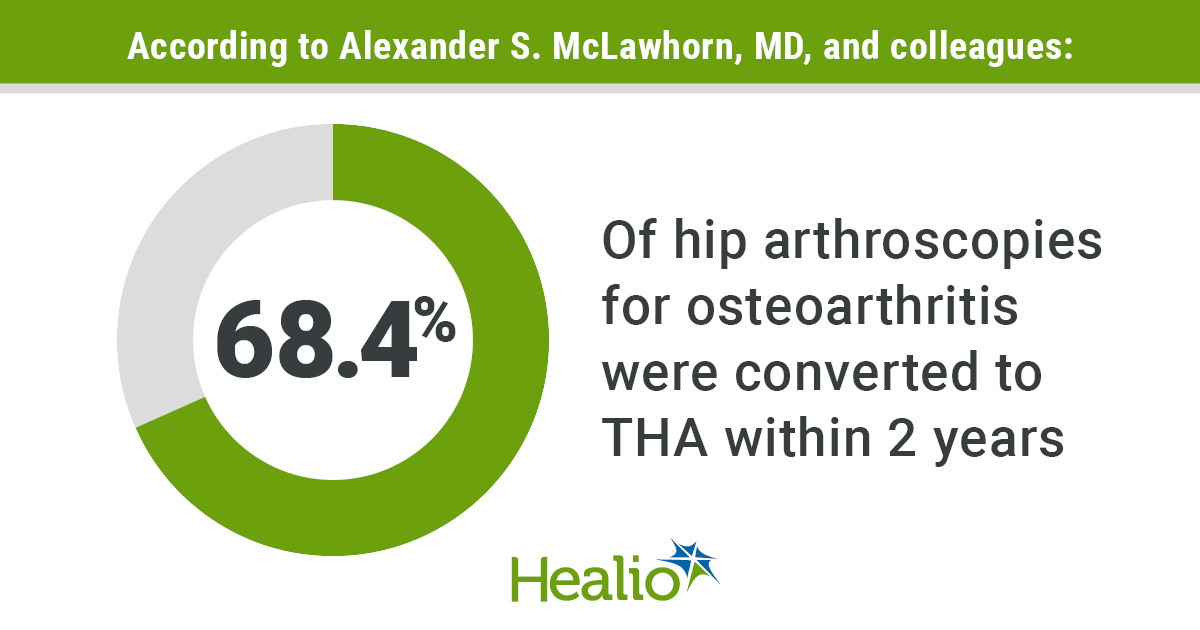Hip arthroscopy for OA associated with high THA conversion rate
Patients who underwent hip arthroscopy for osteoarthritis had a high conversion rate to total hip arthroplasty, as well as an increased risk of revision within 2 years, according to results.

Alexander S. McLawhorn, MD, MBA, hip and knee surgeon at Hospital for Special Surgery, and colleagues stratified patients into two groups based on whether they had undergone hip arthroscopy for OA prior to THA. Researchers considered the frequency of revision THA within 2 years of primary THA as the primary outcome, while other outcomes included revision for specific failure modes such as aseptic loosening, periprosthetic joint infection, periprosthetic fracturs and dislocation at 2 years after primary THA.
Among the 2,617 patients who underwent hip arthroscopy for OA, results showed a conversion rate of 68.4% to THA within 2 years. Researchers noted patients had an average time from hip arthroscopy to THA of 1.12 years. Patients who underwent hip arthroscopy prior to THA had a 3.7 times greater risk of revision hip replacement surgery compared with patients who did not undergo hip arthroscopy prior to THA, according to results. Researchers also found a 2.8 times greater risk of implant loosening and a 1.9 times higher risk of joint infection after hip replacement among patients who underwent hip arthroscopy prior to THA. Results showed 3.4% of patients in the arthroscopy group required revision surgery within 2 years of THA vs. 2.1% of patients in the non-arthroscopy group. Patients in the arthroscopy group also had higher rates of dislocation (3.2% vs. 2.3%), joint infection (2.9% vs. 1.6%) and joint loosening (2.3% vs. 1%) compared with the non-arthroscopy group, researchers noted.

“This study suggests that hip arthroscopy for hip arthritis in older patients is a low-value procedure,” McLawhorn told Healio Orthopedics. “The majority of identified patients went on to total hip replacement within 2 years of their arthroscopy, and hip arthroscopy was associated with worse outcomes in these patients after hip replacement was performed.” – by Casey Tingle
References: Hip arthroscopy for arthritis associated with unacceptably high conversion to total hip replacement and significantly worse outcomes. Available at: https://www.newswise.com/articles/hip-arthroscopy-for-arthritis-associated-with-unacceptably-high-conversion-to-total-hip-replacement-and-significantly-worse-outcomes. Accessed May 27, 2020.
Malahias MA, et al. Hip Int. 2020;doi:10.1177/1120700020911043.
Malahias MA, et al. Poster 0127. Presented at: American Academy of Orthopaedic Surgeons Annual Meeting; March 24-28, 2020 (meeting canceled).



